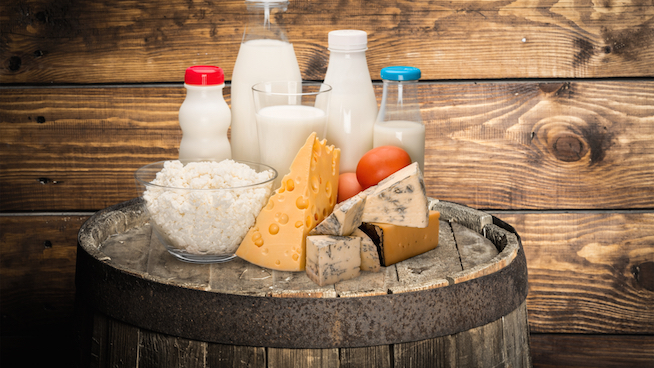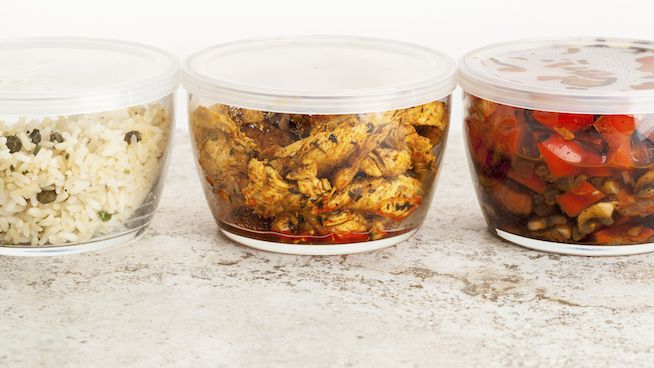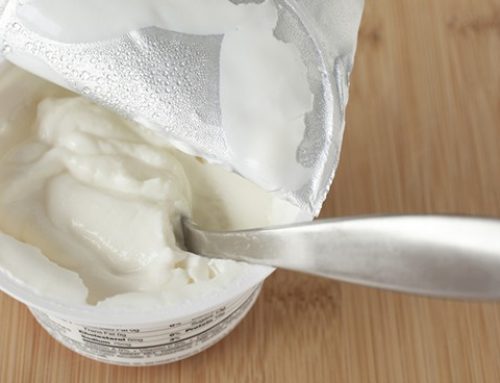3 Protein Myths Busted
Let me preface this article by saying that I love food. All food. Protein consumption is a hobby of mine. This article is written from one protein connoisseur to another, with sincerity and some layman’s terms. I only share the truth because I care. Also, because I love evidence-based information, and you deserve to know it.
Protein Myth 1: Consume high amounts of protein for each meal
Many believe that the more protein you consume, the more you will reap its benefits. In the scientific community, this is understood as the dose-response relationship, where the dose (amount of protein) changes the response (benefit of protein). Here’s an amateur sketch:
As it turns out, the benefits of protein may stop once you consume a certain amount. A study published by the American Journal of Clinical Nutrition from McMaster University found that consuming 20 grams of protein at one time maximizes the rebuilding of muscle tissue.
So, consuming higher amounts of protein for each meal may not be necessary, but is there any harm in doing it? Actually, there can be.
Consuming protein at a rate that surpasses the body’s ability to store it in muscle tissue causes protein to degrade. When protein degrades, nitrogen is produced. The body can convert and remove nitrogen through the urine. However, a review from the International Journal of Sports Nutrition, Exercise and Metabolism found that the body is limited in how much nitrogen it can remove from high amounts of protein consumption. The remaining nitrogen can lead to serious health implications and reduce the efficiency of rebuilding muscle tissue, actually working against you.
Recommendation
Ideally, do not exceed 1.3 grams of protein per pound of body weight in one day, and 25 grams of protein per meal. Know that these are maximum values. Optimal protein consumption varies by individual. Follow these basic protein consumption recommendations from Institutional Society of Sports Nutrition, based on your training and size:
- Strength/Power athlete: 0.7 – 0.9 g/lb of body weight
- Endurance athlete: 0.5 – 0.7 g/lb of body weight
Here are some examples:
- Athlete A: 210-pound male weightlifter x 0.8 g protein = 168 g of protein per day
- Athlete B: 115-pound female swimmer x 0.5 g protein = 57.5 g of protein per day
If it’s the end of the day and you haven’t consumed your recommended amount of protein, don’t sweat it. Make up the difference over the next few days. Including protein in snacks between meals can also help balance protein consumption.
Protein Myth 2: Supplement protein before and during sleep.
“Make sure you wake up at 4 a.m. and take your leucine,” says Joe. Joe’s a muscular guy. Why not listen to Joe? Because supplementing leucine at 4 a.m. did not make Joe a muscular guy.
Absorption of protein is relatively slow, at a rate of 5-8 grams per hour. Even the absorption rate of “fast-acting” whey protein is about 8-10 grams per hour. To put this in perspective, a juicy steak the size of a deck of cards has about 28 grams of protein and could take 3-5 hours to absorb.
Protein is made up of amino acids, commonly known as the “building blocks.” The body naturally keeps a “storage pool” of amino acids inside the muscles. Our bodies take from and add to this pool constantly to preserve muscle and function. A study by the Renal Clinic in Sweden found that the average male has over 100 grams of amino acids in the pool at any given time. Knowing this and the already slow absorption rate of protein, supplementing even more before and during sleep likely provides no additional benefit. This includes the leucine that Joe mentioned, which is the only one of 20 amino acids that can rebuild muscle tissue on its own. Research has yet to provide adequate evidence that supplementing before or during sleep increases muscle growth or decreases muscle breakdown.
Recommendation
Include protein at dinner and breakfast. Not only will this help ensure adequate protein consumption, but it will also contribute to satiety, reducing the feeling of hunger. Don’t disturb your beauty sleep, which plays an important and often overlooked role in muscle building and recovery.
Protein Myth 3: Protein is the priority nutrient.
The benefits of protein change if you don’t consume enough carbohydrates and fat in your diet. These nutrients need each other, the way Ross needs Rachel (don’t act like you don’t know). A University of Texas study published in the American Journal of Physiology found that protein and carbohydrates consumed together after strength training activate an enzyme known as mTOR, which enhances the rebuilding of muscle tissue. Also, calories from carbohydrates are used in place of protein to replenish energy, and they lower the “stress” hormone cortisol, which would otherwise degrade protein.
Won’t carbohydrates slow me down? Quite the opposite, actually. Carbohydrates are the primary fuel for exercise, including strength training. A study from the American Journal of Clinical Nutrition found that you need about 150 grams of carbohydrates per day just for your brain to function properly. Only 3-5% of total daily energy is fueled by protein.
As for fat, the “black sheep” of the nutrient family, it provides more calories per gram than both protein and carbohydrates. This fosters an environment for muscle growth. It’s also essential in regulating hormones and absorbing certain antioxidants that may reduce inflammation and hence improve recovery.
Recommendation
Prioritize calories from carbohydrates first, then protein, then fat. Recommended carbohydrate intake for athletes is anywhere between 2.3 and 5.5 g/lb of body weight, depending on activity. It can be a challenge to meet these recommendations, so try complementing protein-rich foods with carbohydrates such as chicken with pasta, or steak with potatoes and broccoli. Fat consumption should be between 20 and 30 percent of total calories consumed. Remember, they provide more calories per gram, so this is easier to achieve than you might think. Focus on oils and snacks like nuts or guacamole (you’re welcome).
REFERENCES
Bergström, J., Fürst, P., Noree, L. O., & Vinnars, E. (1974). “Intracellular free amino acid concentration in human muscle tissue.” Journal of Applied Physiology, 36(6), 693-697.
Bilsborough, S., & Mann, N. (2006). “A review of issues of dietary protein intake in humans.” International Journal of Sport Nutrition and Exercise Metabolism, 16(2), 129.
Dreyer, H. C., Drummond, M. J., Pennings, B., Fujita, S., Glynn, E. L., Chinkes, D. L., … & Rasmussen, B. B. (2008). “Leucine-enriched essential amino acid and carbohydrate ingestion following resistance exercise enhances mTOR signaling and protein synthesis in human muscle.” American Journal of Physiology, 294(2), 392-400.
Jequier, E. (1994). “Carbohydrates as a source of energy.” The American Journal of Clinical Nutrition, 59(3), 682-685.
Moore, D. R., Robinson, M. J., Fry, J. L., Tang, J. E., Glover, E. I., Wilkinson, S. B., … & Phillips, S. M. (2009). “Ingested protein dose response of muscle and albumin protein synthesis after resistance exercise in young men.” The American Journal of Clinical Nutrition, 89(1), 161-168.
Veskoukis, A. S., Goutianos, G., Paschalis, V., Margaritelis, N. V., Tzioura, A., Dipla, K., … & Nikolaidis, M. G. (2016). “The rat closely mimics oxidative stress and inflammation in humans after exercise but not after exercise combined with vitamin C administration.” European Journal of Applied Physiology, 116(4), 791-804.
[cf]skyword_tracking_tag[/cf]RECOMMENDED FOR YOU
MOST POPULAR
3 Protein Myths Busted
Let me preface this article by saying that I love food. All food. Protein consumption is a hobby of mine. This article is written from one protein connoisseur to another, with sincerity and some layman’s terms. I only share the truth because I care. Also, because I love evidence-based information, and you deserve to know it.
Protein Myth 1: Consume high amounts of protein for each meal
Many believe that the more protein you consume, the more you will reap its benefits. In the scientific community, this is understood as the dose-response relationship, where the dose (amount of protein) changes the response (benefit of protein). Here’s an amateur sketch:
As it turns out, the benefits of protein may stop once you consume a certain amount. A study published by the American Journal of Clinical Nutrition from McMaster University found that consuming 20 grams of protein at one time maximizes the rebuilding of muscle tissue.
So, consuming higher amounts of protein for each meal may not be necessary, but is there any harm in doing it? Actually, there can be.
Consuming protein at a rate that surpasses the body’s ability to store it in muscle tissue causes protein to degrade. When protein degrades, nitrogen is produced. The body can convert and remove nitrogen through the urine. However, a review from the International Journal of Sports Nutrition, Exercise and Metabolism found that the body is limited in how much nitrogen it can remove from high amounts of protein consumption. The remaining nitrogen can lead to serious health implications and reduce the efficiency of rebuilding muscle tissue, actually working against you.
Recommendation
Ideally, do not exceed 1.3 grams of protein per pound of body weight in one day, and 25 grams of protein per meal. Know that these are maximum values. Optimal protein consumption varies by individual. Follow these basic protein consumption recommendations from Institutional Society of Sports Nutrition, based on your training and size:
- Strength/Power athlete: 0.7 – 0.9 g/lb of body weight
- Endurance athlete: 0.5 – 0.7 g/lb of body weight
Here are some examples:
- Athlete A: 210-pound male weightlifter x 0.8 g protein = 168 g of protein per day
- Athlete B: 115-pound female swimmer x 0.5 g protein = 57.5 g of protein per day
If it’s the end of the day and you haven’t consumed your recommended amount of protein, don’t sweat it. Make up the difference over the next few days. Including protein in snacks between meals can also help balance protein consumption.
Protein Myth 2: Supplement protein before and during sleep.
“Make sure you wake up at 4 a.m. and take your leucine,” says Joe. Joe’s a muscular guy. Why not listen to Joe? Because supplementing leucine at 4 a.m. did not make Joe a muscular guy.
Absorption of protein is relatively slow, at a rate of 5-8 grams per hour. Even the absorption rate of “fast-acting” whey protein is about 8-10 grams per hour. To put this in perspective, a juicy steak the size of a deck of cards has about 28 grams of protein and could take 3-5 hours to absorb.
Protein is made up of amino acids, commonly known as the “building blocks.” The body naturally keeps a “storage pool” of amino acids inside the muscles. Our bodies take from and add to this pool constantly to preserve muscle and function. A study by the Renal Clinic in Sweden found that the average male has over 100 grams of amino acids in the pool at any given time. Knowing this and the already slow absorption rate of protein, supplementing even more before and during sleep likely provides no additional benefit. This includes the leucine that Joe mentioned, which is the only one of 20 amino acids that can rebuild muscle tissue on its own. Research has yet to provide adequate evidence that supplementing before or during sleep increases muscle growth or decreases muscle breakdown.
Recommendation
Include protein at dinner and breakfast. Not only will this help ensure adequate protein consumption, but it will also contribute to satiety, reducing the feeling of hunger. Don’t disturb your beauty sleep, which plays an important and often overlooked role in muscle building and recovery.
Protein Myth 3: Protein is the priority nutrient.
The benefits of protein change if you don’t consume enough carbohydrates and fat in your diet. These nutrients need each other, the way Ross needs Rachel (don’t act like you don’t know). A University of Texas study published in the American Journal of Physiology found that protein and carbohydrates consumed together after strength training activate an enzyme known as mTOR, which enhances the rebuilding of muscle tissue. Also, calories from carbohydrates are used in place of protein to replenish energy, and they lower the “stress” hormone cortisol, which would otherwise degrade protein.
Won’t carbohydrates slow me down? Quite the opposite, actually. Carbohydrates are the primary fuel for exercise, including strength training. A study from the American Journal of Clinical Nutrition found that you need about 150 grams of carbohydrates per day just for your brain to function properly. Only 3-5% of total daily energy is fueled by protein.
As for fat, the “black sheep” of the nutrient family, it provides more calories per gram than both protein and carbohydrates. This fosters an environment for muscle growth. It’s also essential in regulating hormones and absorbing certain antioxidants that may reduce inflammation and hence improve recovery.
Recommendation
Prioritize calories from carbohydrates first, then protein, then fat. Recommended carbohydrate intake for athletes is anywhere between 2.3 and 5.5 g/lb of body weight, depending on activity. It can be a challenge to meet these recommendations, so try complementing protein-rich foods with carbohydrates such as chicken with pasta, or steak with potatoes and broccoli. Fat consumption should be between 20 and 30 percent of total calories consumed. Remember, they provide more calories per gram, so this is easier to achieve than you might think. Focus on oils and snacks like nuts or guacamole (you’re welcome).
REFERENCES
Bergström, J., Fürst, P., Noree, L. O., & Vinnars, E. (1974). “Intracellular free amino acid concentration in human muscle tissue.” Journal of Applied Physiology, 36(6), 693-697.
Bilsborough, S., & Mann, N. (2006). “A review of issues of dietary protein intake in humans.” International Journal of Sport Nutrition and Exercise Metabolism, 16(2), 129.
Dreyer, H. C., Drummond, M. J., Pennings, B., Fujita, S., Glynn, E. L., Chinkes, D. L., … & Rasmussen, B. B. (2008). “Leucine-enriched essential amino acid and carbohydrate ingestion following resistance exercise enhances mTOR signaling and protein synthesis in human muscle.” American Journal of Physiology, 294(2), 392-400.
Jequier, E. (1994). “Carbohydrates as a source of energy.” The American Journal of Clinical Nutrition, 59(3), 682-685.
Moore, D. R., Robinson, M. J., Fry, J. L., Tang, J. E., Glover, E. I., Wilkinson, S. B., … & Phillips, S. M. (2009). “Ingested protein dose response of muscle and albumin protein synthesis after resistance exercise in young men.” The American Journal of Clinical Nutrition, 89(1), 161-168.
Veskoukis, A. S., Goutianos, G., Paschalis, V., Margaritelis, N. V., Tzioura, A., Dipla, K., … & Nikolaidis, M. G. (2016). “The rat closely mimics oxidative stress and inflammation in humans after exercise but not after exercise combined with vitamin C administration.” European Journal of Applied Physiology, 116(4), 791-804.
[cf]skyword_tracking_tag[/cf]














